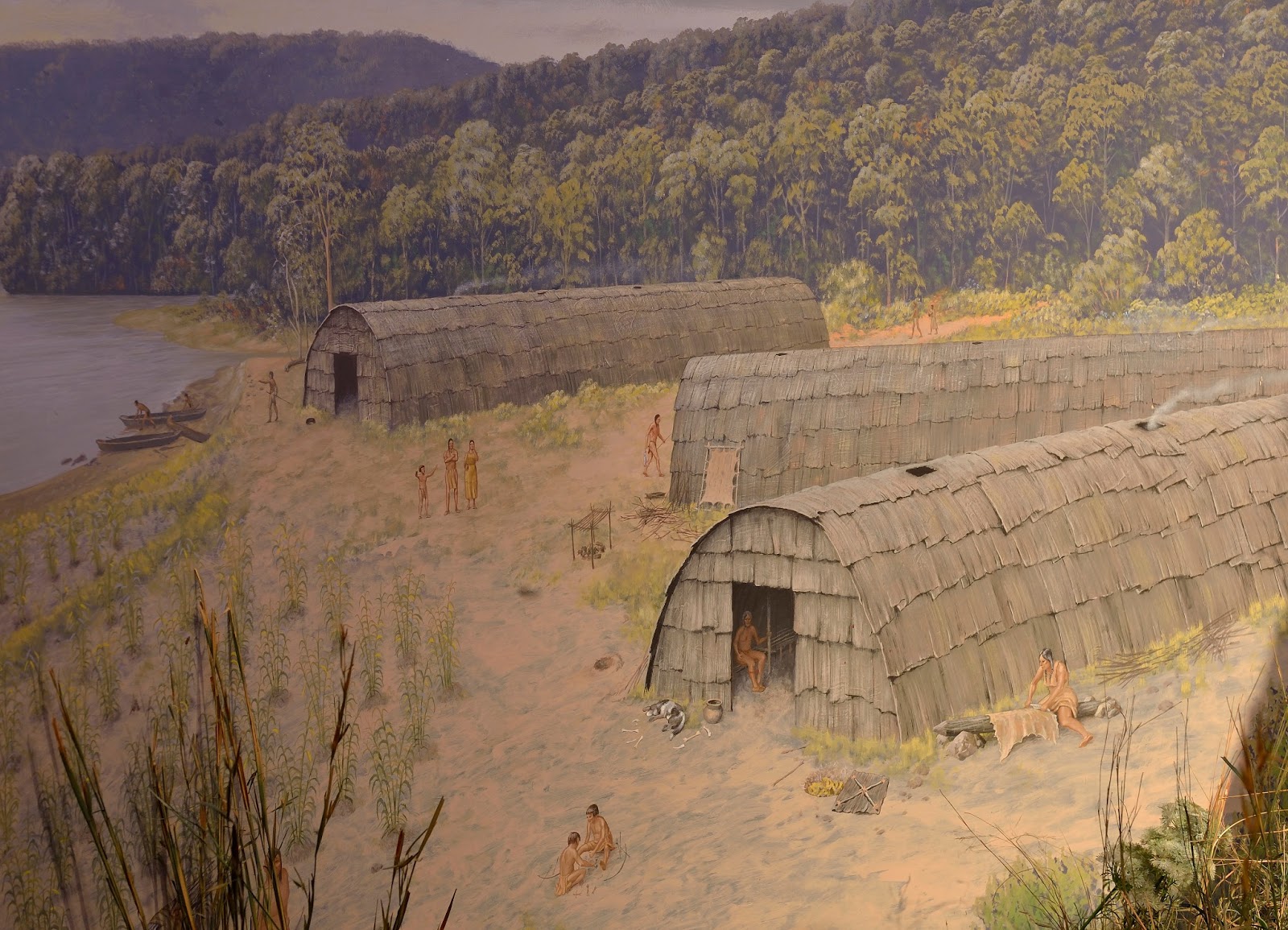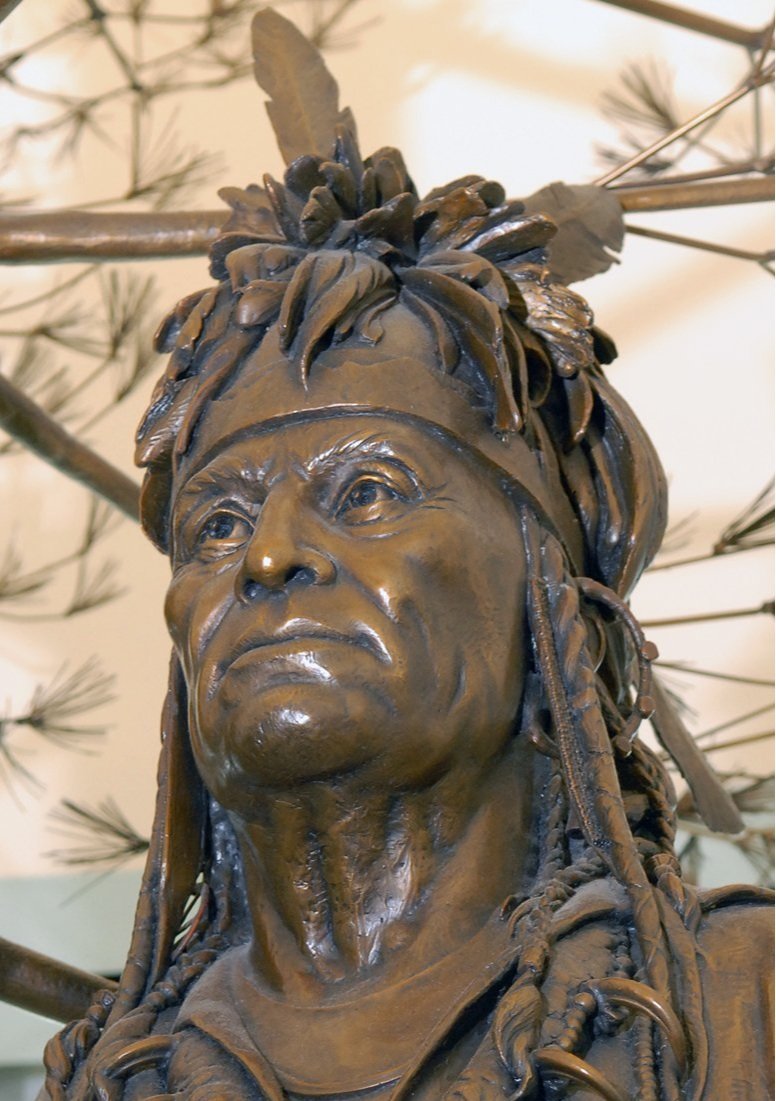
The Susquehannock Tribe: Eastern Woodland Culture and a Legacy Forged in Power and Tragedy
The Susquehannock, a formidable Eastern Woodland people, once commanded the vast and fertile Susquehanna River Valley, their influence stretching across what is now Pennsylvania, Maryland, and parts of New York. Known to their neighbors and early European explorers as powerful warriors and skilled traders, their history is a compelling narrative of cultural resilience, strategic dominance, and ultimately, a tragic decline brought about by disease, shifting alliances, and colonial expansion. Their story is not merely a footnote in American history, but a crucial testament to the vibrant and complex societies that thrived long before European settlement, and the devastating impact of that encounter.
At the heart of Susquehannock identity was their deep connection to the Eastern Woodland environment. Their name, often translated from Algonquian as "people of the muddy river," directly references the Susquehanna River, the lifeblood of their territory. This abundant landscape shaped every aspect of their culture. Like many Iroquoian-speaking peoples, the Susquehannock were semi-sedentary, practicing a sophisticated form of agriculture known as the "Three Sisters" – corn, beans, and squash – which provided the caloric backbone of their diet. This agricultural prowess allowed for larger, more stable populations and the development of permanent, palisaded villages, often strategically located on high ground overlooking the river for defense and access to trade routes.
Beyond farming, their subsistence was a testament to their ecological knowledge. They were expert hunters, tracking deer, bear, and elk through the dense forests, and adept fishermen, utilizing weirs and nets to harvest the abundant salmon and other fish from the Susquehanna. Wild plants, berries, and nuts supplemented their diet, gathered through seasonal rounds that saw families move to temporary camps. This harmonious balance with nature was not merely practical; it was deeply spiritual, interwoven with animistic beliefs that recognized the living spirit in all things – the trees, the animals, the river itself.
Susquehannock society was intricately structured, built upon a matrilineal system where lineage and inheritance were traced through the mother. Women held significant power and influence, owning property, controlling agricultural production, and playing key roles in political and spiritual life. Clans, often named after animals, formed the bedrock of social organization, providing a framework for identity, kinship, and reciprocal obligations. Political leadership rested with sachems or chiefs, who served as both civil leaders, responsible for maintaining peace and managing resources, and war chiefs, who led raiding parties and directed defensive strategies. Decision-making was often communal, relying on consensus built through extensive councils, reflecting a deeply democratic spirit.
Their material culture was rich and practical. Longhouses, communal dwellings constructed from saplings and bark, housed multiple families, fostering a strong sense of community. They crafted intricate pottery for cooking and storage, utilized stone tools for hunting and farming, and fashioned dugout canoes for navigating the river, which served as both a highway and a source of sustenance. Wampum, strings or belts of polished shell beads, held immense cultural and diplomatic significance. Far more than mere currency, wampum served as a mnemonic device for recording treaties, conveying messages, and validating agreements, embodying the truth and sincerity of spoken words.

The Susquehannock’s historical legacy began with a period of remarkable power and expansion. Their strategic location along key trade routes, connecting the interior with the Atlantic coast, made them formidable economic and military players. By the early 17th century, they had established themselves as a dominant force in the region, engaging in both trade and conflict with neighboring tribes such as the Lenape, Nanticoke, and particularly, the burgeoning Iroquois Confederacy to the north. Their reputation as fierce warriors was well-earned, and their disciplined fighting tactics and access to superior resources often gave them the upper hand.
Early European encounters, beginning with Captain John Smith’s exploration of the Chesapeake Bay in 1608, further cemented their image as a powerful nation. Smith described them as "gyant-like" men, "of a most stout and manlike courage," noting their impressive stature and the array of finely crafted tools and weapons they possessed. This initial contact, while seemingly benign, marked the beginning of a profound and ultimately devastating transformation. The introduction of European trade goods, particularly firearms and iron tools, initially bolstered Susquehannock power, allowing them to consolidate control over their territory and intensify their conflicts with rivals.
However, the benefits of European contact were overshadowed by its catastrophic consequences. The Susquehannock, like all Native American populations, had no immunity to Old World diseases. Epidemics of smallpox, measles, and influenza swept through their communities with horrifying frequency, decimating their population. It is estimated that within a few generations of sustained contact, their numbers plummeted by as much as 90%, transforming a once thriving nation into a shadow of its former self. This demographic collapse weakened their social fabric, disrupted their economic systems, and left them vulnerable to external threats.
The 17th century became a brutal period for the Susquehannock. As the fur trade intensified, competition for hunting grounds and access to European goods escalated. The Iroquois Confederacy, themselves armed by the Dutch and later the English, launched relentless campaigns known as the Beaver Wars, seeking to eliminate rivals and expand their own fur trade empire. The Susquehannock, weakened by disease and constantly embattled, found themselves caught in a vice between the expanding English and Dutch colonies and the aggressive Iroquois.
Despite their diminished numbers, the Susquehannock fought with extraordinary tenacity. They forged alliances with the Swedish and later the English colonies, often playing European powers against each other in a desperate bid for survival. However, the tide of history was against them. The Susquehannock War (1675-1676), exacerbated by colonial anxieties and internal conflicts like Bacon’s Rebellion in Virginia, proved to be their undoing. Attacked by both colonial militias and the Iroquois, their final major fort on the Potomac River was besieged. Although they eventually broke free, their strength was broken, and many survivors were absorbed into the Iroquois Confederacy or sought refuge with other Eastern Woodland tribes like the Lenape.
A tragic coda to the Susquehannock story unfolded nearly a century later, highlighting the enduring prejudice and violence of the colonial frontier. By the mid-18th century, a small, peaceful remnant of the Susquehannock, known as the Conestoga, lived on a tract of land near present-day Lancaster, Pennsylvania. They were Christianized, had adopted many Quaker customs, and were largely disconnected from the ongoing conflicts of Pontiac’s War. Yet, in the paranoia and anti-Native hysteria of the time, they became scapegoats.
On December 14, 1763, a vigilante group known as the Paxton Boys, fueled by rumors and a desire for revenge against all Native Americans, attacked the Conestoga settlement. They murdered six individuals and burned their homes. The remaining fourteen Conestoga were taken into protective custody in the Lancaster workhouse. However, two weeks later, on December 27, the Paxton Boys rode into Lancaster, broke into the workhouse, and brutally murdered every last Susquehannock, including women and children, in a horrific act of unprovoked violence. The Conestoga Massacre stands as a dark stain on American history, a stark reminder of the barbarity and injustice inflicted upon Native peoples.
The Susquehannock nation, as a distinct political entity, ceased to exist after these events. Yet, their legacy endures. Their name lives on in the magnificent river that once defined their world, a constant reminder of the powerful people who first stewarded its banks. Archaeological excavations, particularly at sites like Washington Boro in Pennsylvania, continue to unearth artifacts and provide invaluable insights into their daily lives, their sophisticated culture, and their complex interactions with both Native neighbors and European newcomers.
The story of the Susquehannock Tribe is a powerful lesson in the profound impact of colonial contact, disease, and warfare on Indigenous societies. It is a story of a people who, against overwhelming odds, fought to preserve their culture and their lands. Their journey from a dominant Eastern Woodland power to a tragic, dispersed remnant serves as a vital reminder of the richness of Native American history and the enduring importance of acknowledging the full, often painful, truth of our shared past. Their spirit, though fragmented, resonates in the landscape they once called home, a testament to a legacy forged in both the glory of their strength and the sorrow of their ultimate demise.
